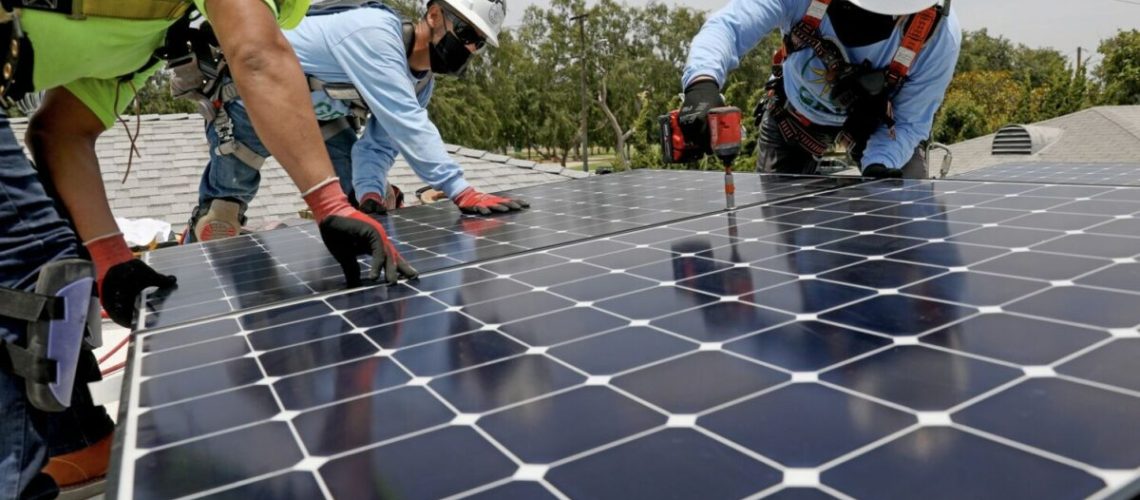There are currently about 72,000 solar rooftops in the target region that includes Washington D.C., Northern Virginia and parts of Maryland.
The Metropolitan Washington Council of Governments (MWCOG) passed a goal of installing solar panels on 250,000 rooftops in the metro D.C. area by 2030. The region includes D.C., Northern Viriginia, and parts of Maryland. Currently, there are about 72,000 rooftops that have solar panels installed, meaning that 178,000 more rooftops are targeted in the 2030 goal.
In 2020 MWCOG passed a climate and energy action plan to reduce emissions by 50% from 2005 levels. The climate plan also calls for about 2% of the region’s energy to come from local, distributed renewable energy sources like rooftop solar.
“It’s super ambitious, there’s no doubt about it,” said Robert W. Lazaro Jr., executive director for the Northern Virginia Regional Commission. “When you look at contributors to greenhouse gases, buildings are going to be [among] the biggest drivers.”
One of the initiatives in the region that is expected to help achieve the 250,000 target is Solar For All. The Department of Energy funds the program, which partners with organizations across the District to install solar on multi-family buildings. Program managers of Solar For All said participants should receive roughly 50% savings on their electricity bill for 15 years under the program.
The program is funded through the District’s Renewable Energy Development Fund. At the state level, Maryland’s community solar program has a low-income “carve-out,” meaning that about 125 megawatts (MW) of the total 418 MW statewide cap is set aside for projects focused on low- and moderate-income customers.
The D.C. area’s ambitious goal would represent about 24% of single-family homes adding rooftop solar, a level of market penetration only approached by Hawaii today. MWCOG’s energy procurement target also calls for a 10% compound annual growth rate in clean power purchases through 2030.
MWCOG’s climate action plan also recognizes the need for pairing intermittent generation sources like solar with energy storage. The 2030 goal establishes that roughly 10% of on-site solar installations will need to be paired with energy storage systems.
“COG will continue to work with its regional partners to evaluate project-level feasibility and cost-effectiveness of measures to meet the 2030 goals of reducing GHG emissions 50 percent below the 2005 levels,” said the climate action plan. “The next ten years of action will set the stage for the 2050 vision for achieving 80% [greenhouse gas] emission reduction and a resilient metropolitan Washington.”



